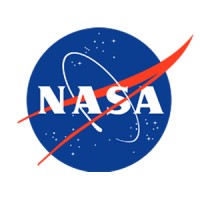Navigating the Cosmic Crossroads: Isaacman’s Vision for NASA
April 10, 2025, 9:59 pm

Location: United States, District of Columbia, Washington
Employees: 5001-10000
Founded date: 2002
Total raised: $7.53B

Location: United States, Maryland, Greenbelt
Employees: 10001+
Founded date: 1958
Total raised: $25.7B

Location: United States, Pennsylvania, Allentown
Employees: 1001-5000
Founded date: 2014
Total raised: $200M
The cosmos beckons. Humanity stands at a pivotal moment in space exploration. With Jared Isaacman nominated to lead NASA, the agency faces a crossroads. Should it focus on the moon or set its sights on Mars? Isaacman, a billionaire entrepreneur and space enthusiast, has a unique perspective. He’s not a typical nominee. He’s a private astronaut, a spacewalker, and a close ally of Elon Musk. His vision could reshape NASA’s future.
Isaacman’s journey began in a basement. He launched Shift4 Payments, a payment processing company, from humble beginnings. Now, he’s a billionaire with two spaceflights under his belt. His experience is unconventional. He’s not a scientist or a career NASA employee. Yet, he brings a fresh perspective. He believes in the potential of both lunar and Martian exploration.
During his Senate confirmation hearing, Isaacman faced tough questions. Senators wanted clarity on his priorities. The moon or Mars? He argued that both can coexist. The moon serves as a stepping stone. It’s a training ground for future Mars missions. The Artemis program aims to return astronauts to the moon. This time, it’s not just a quick visit. Lunar bases are in the plans. The moon is a vital part of the journey to Mars.
But the path to the moon has been rocky. The Artemis program has faced delays and budget overruns. The Space Launch System, NASA’s flagship rocket, has launched only once. Critics question the feasibility of the moon mission. They worry about costs and timelines. Isaacman acknowledges these challenges. He emphasizes the need for a clear strategy.
Mars, on the other hand, is Musk’s playground. The SpaceX CEO envisions a human settlement on the red planet. His Starship rocket is designed for this purpose. It’s the largest and most powerful rocket ever built. Isaacman supports this vision but insists on a balanced approach. He believes NASA can pursue both objectives without sacrificing one for the other.
The Senate hearing revealed the tension between lunar and Martian ambitions. Senator Ted Cruz warned against abandoning the moon. He argued that a shift in focus could allow China to take the lead in space exploration. The stakes are high. The U.S. must maintain its leadership in space. Isaacman understands this. He reassured senators of his commitment to NASA’s mission. His loyalty lies with the agency and the nation.
Isaacman’s relationship with Musk raises eyebrows. SpaceX holds significant contracts with NASA. Some senators questioned potential conflicts of interest. Isaacman was clear: his allegiance is to NASA. He aims to protect the agency from undue influence. He supports the continuation of the International Space Station (ISS) through 2030. This is crucial for ongoing research and international collaboration.
The ISS has been a cornerstone of human spaceflight. It has fostered partnerships with other nations. However, Musk has suggested moving on from the ISS. He believes resources should be redirected to Mars. Isaacman disagrees. He sees the ISS as a vital asset until private outposts can take its place.
The hearing showcased the complexities of space policy. The U.S. must balance its ambitions with practical realities. Isaacman’s vision could bridge the gap. He advocates for a dual approach. The moon and Mars are not mutually exclusive. They are part of a larger narrative.
The Artemis program is not just about landing on the moon. It’s about establishing a sustainable presence. Lunar bases will enable long-term exploration. They will serve as launchpads for deeper space missions. Isaacman’s experience as a private astronaut gives him unique insights. He understands the challenges of space travel. He knows the importance of preparation and training.
As the world watches, NASA’s future hangs in the balance. Isaacman’s nomination is a gamble. He brings a fresh perspective but lacks traditional credentials. His success will depend on his ability to navigate the political landscape. He must build consensus among lawmakers. He must also inspire the public.
The excitement surrounding space exploration is palpable. People dream of walking on the moon and living on Mars. Isaacman’s vision could reignite that passion. He represents a new era of space exploration. One where private industry and government collaborate.
The road ahead is uncertain. Challenges abound. But with vision and determination, humanity can reach for the stars. Isaacman’s leadership could be the catalyst for a new chapter in space exploration. The moon and Mars await. The question remains: can we balance our ambitions and make them a reality?
In the end, the cosmos is vast. It offers endless possibilities. With the right leadership, NASA can chart a course for the future. The journey is just beginning. The stars are calling. Will we answer?
Isaacman’s journey began in a basement. He launched Shift4 Payments, a payment processing company, from humble beginnings. Now, he’s a billionaire with two spaceflights under his belt. His experience is unconventional. He’s not a scientist or a career NASA employee. Yet, he brings a fresh perspective. He believes in the potential of both lunar and Martian exploration.
During his Senate confirmation hearing, Isaacman faced tough questions. Senators wanted clarity on his priorities. The moon or Mars? He argued that both can coexist. The moon serves as a stepping stone. It’s a training ground for future Mars missions. The Artemis program aims to return astronauts to the moon. This time, it’s not just a quick visit. Lunar bases are in the plans. The moon is a vital part of the journey to Mars.
But the path to the moon has been rocky. The Artemis program has faced delays and budget overruns. The Space Launch System, NASA’s flagship rocket, has launched only once. Critics question the feasibility of the moon mission. They worry about costs and timelines. Isaacman acknowledges these challenges. He emphasizes the need for a clear strategy.
Mars, on the other hand, is Musk’s playground. The SpaceX CEO envisions a human settlement on the red planet. His Starship rocket is designed for this purpose. It’s the largest and most powerful rocket ever built. Isaacman supports this vision but insists on a balanced approach. He believes NASA can pursue both objectives without sacrificing one for the other.
The Senate hearing revealed the tension between lunar and Martian ambitions. Senator Ted Cruz warned against abandoning the moon. He argued that a shift in focus could allow China to take the lead in space exploration. The stakes are high. The U.S. must maintain its leadership in space. Isaacman understands this. He reassured senators of his commitment to NASA’s mission. His loyalty lies with the agency and the nation.
Isaacman’s relationship with Musk raises eyebrows. SpaceX holds significant contracts with NASA. Some senators questioned potential conflicts of interest. Isaacman was clear: his allegiance is to NASA. He aims to protect the agency from undue influence. He supports the continuation of the International Space Station (ISS) through 2030. This is crucial for ongoing research and international collaboration.
The ISS has been a cornerstone of human spaceflight. It has fostered partnerships with other nations. However, Musk has suggested moving on from the ISS. He believes resources should be redirected to Mars. Isaacman disagrees. He sees the ISS as a vital asset until private outposts can take its place.
The hearing showcased the complexities of space policy. The U.S. must balance its ambitions with practical realities. Isaacman’s vision could bridge the gap. He advocates for a dual approach. The moon and Mars are not mutually exclusive. They are part of a larger narrative.
The Artemis program is not just about landing on the moon. It’s about establishing a sustainable presence. Lunar bases will enable long-term exploration. They will serve as launchpads for deeper space missions. Isaacman’s experience as a private astronaut gives him unique insights. He understands the challenges of space travel. He knows the importance of preparation and training.
As the world watches, NASA’s future hangs in the balance. Isaacman’s nomination is a gamble. He brings a fresh perspective but lacks traditional credentials. His success will depend on his ability to navigate the political landscape. He must build consensus among lawmakers. He must also inspire the public.
The excitement surrounding space exploration is palpable. People dream of walking on the moon and living on Mars. Isaacman’s vision could reignite that passion. He represents a new era of space exploration. One where private industry and government collaborate.
The road ahead is uncertain. Challenges abound. But with vision and determination, humanity can reach for the stars. Isaacman’s leadership could be the catalyst for a new chapter in space exploration. The moon and Mars await. The question remains: can we balance our ambitions and make them a reality?
In the end, the cosmos is vast. It offers endless possibilities. With the right leadership, NASA can chart a course for the future. The journey is just beginning. The stars are calling. Will we answer?